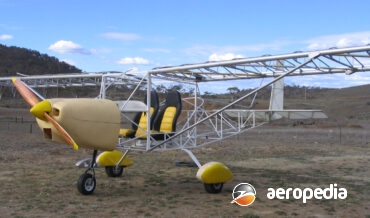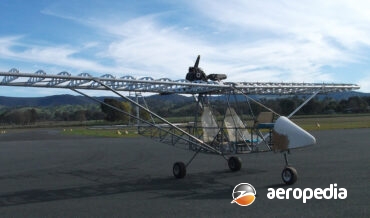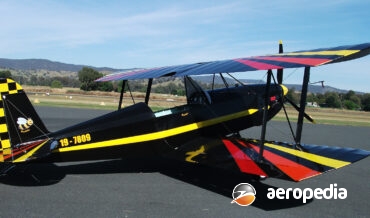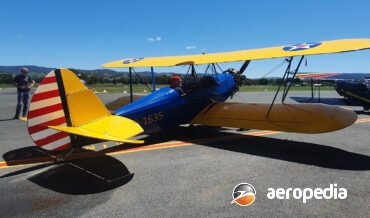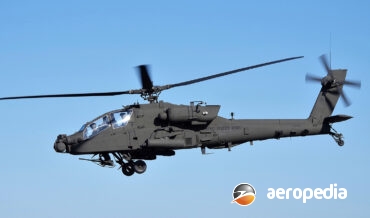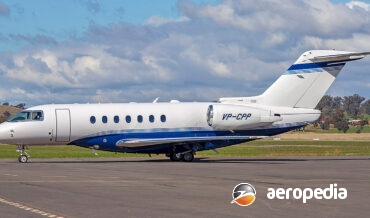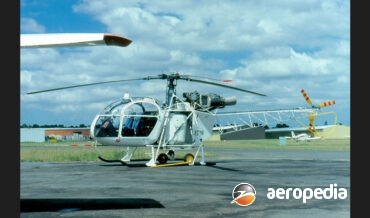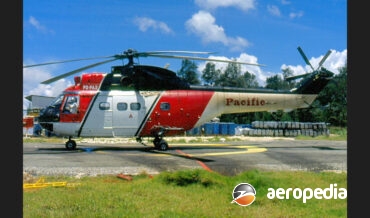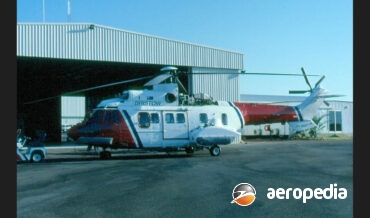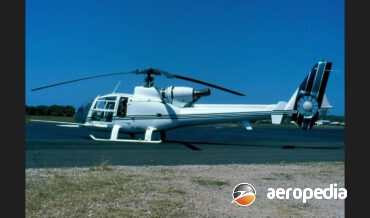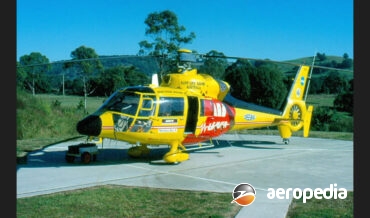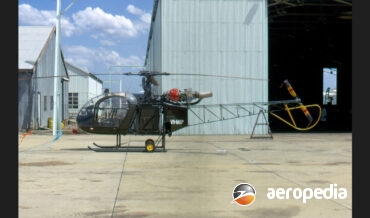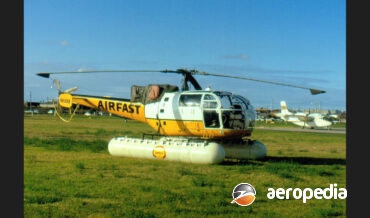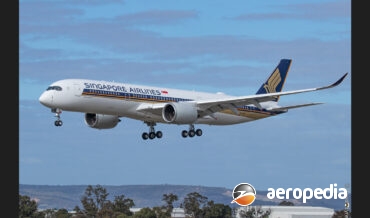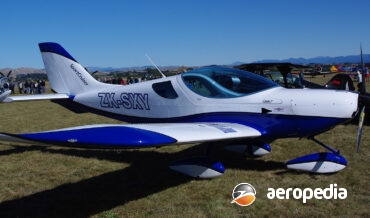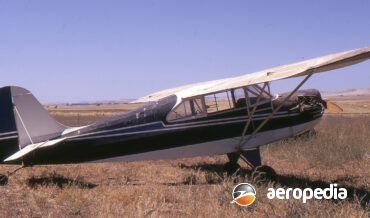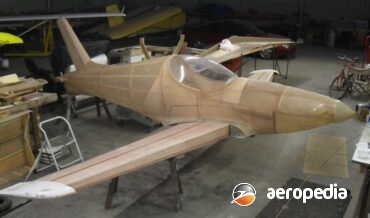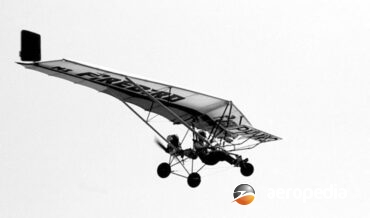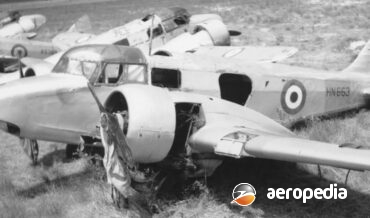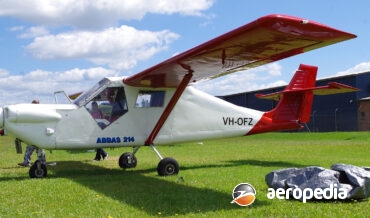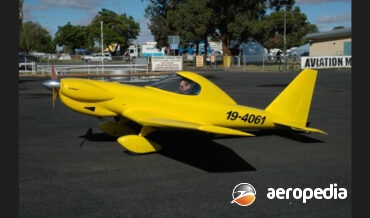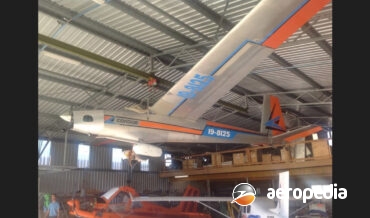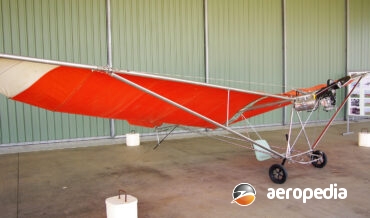David C. Eyre
Photograph: Country of origin: Italy Power Plant: One 115 hp Rotax 912ISc four-cylinder horizontally-opposed air-cooled engine Specifications: Wingspan: 8.2 m (28 ft 2 in) Length: 6.6 m (21 ft 7 in) Height: 2.4 m (7 ft 9 in) Wing Area: 115 m2 (134.8 sq ft) Design manoeuvring speed: 178 km/h
David C. Eyre
- October 4, 2023
Photograph: Aerospatiale SA-341 Gazelle VH-GKK (c/n 1527) at Bankstown, NSW (David C Eyre) Country of origin: United States of America. Description: Multi-role battlefield transport support helicopter. Power Plant: Two 1487kw (1,994 shp) General Electric T700-GE -701D turboshafts. Specifications: Length: 19.76 m (64 ft 10 in) Fuselage length: 15.27 m (50
David C. Eyre
- October 4, 2023
Specifications: Max speed on land: 120 km/h (75 mph) Max speed in the air: 160 km/h (99 mph) Fuel capacity: 60 litres (13 Imp gals) Max range: 420 kms (261 miles) Max flying altitude: 1,800 ms (5,900 ft)/li> Payload: 101 kgs (227 lbs) Loaded weight: 265 kgs (584 lbs) History:
David C. Eyre
- October 4, 2023
Photograph: The prototype Vertiia V1000 VH-VEI (c/n 001) (AMSL) History: The Vertiia is described as the world’s most efficient and long-range vertical take-off and landing aircraft. The company, AMSL Aero Pty Ltd, was formed in 2017 and the aircraft is said to be inspired by Lawrence Hargrave. The aircraft in
David C. Eyre
- October 4, 2023
Photograph: The first Tempest during construction at Tumut, NSW (M Roodt) History: The Tempest is a two-seat, side-by-side, light sport aircraft, designed by Michael Roodt for touring. It is fitted with a 80 kw (108 hp) Lycoming four-cylinder engine.
David C. Eyre
- November 22, 2021
Photograph: The first Australian Spurwing during construction (M Roodt) History: The Spurwing is a two-seat in tandem light sport aircraft fitted with a Rotax 618 LC engine providing 56 kw (75 hp). The aircraft was initially designed and built by Mr Roodt in South Africa where he first aircraft was
David C. Eyre
- November 22, 2021
Photograph: The Bumblebee at Tumut, NSW (M Roodt) History: The Bumblebee is a biplane designed and built by Miichael Roodt and was initially fitted with a 39 kw (52 hp) Rotax 503 engine but this was replaced in 2021 with a 60 kw (80 hp) Jabiru 2200 four-cylinder engine. The
David C. Eyre
- November 22, 2021
Photograph: The Barnstormer at Tumut, NSW (M Roodt) History: The Barnstormer is a two-seat in tandem scale Boeing Stearman initially fitted with a seven-cylinder Rotec R-2800 radial engine providing 83 kw (110 hp) with a cruising speed of 121 km/h 975 mph) and stalling speed of 68 km/h (42 mph).
David C. Eyre
- November 22, 2021
Photograph: An artists impression of a Firecatcher F-45 (Pacific Aerospace) Country of origin: New Zealand / United Kingdom Description: Fire-bomber / light utility transport Power Plant: One Pratt & Whitney Canada PT-65F turboprop Specifications: Cruising speed: 350 km/h (220 mph) Range: 1852 km (1,151 miles) History: The Firecatcher F-45 is
David C. Eyre
- November 21, 2021
On 15 January 2021 to meet Project Land Requirement 4503 the Australian Government ordered 29 examples of the Boeing AH-64E Apache Guardian to replace the the troublesome Eurocopter Tiger attack helicopter with the Australian Army.
David C. Eyre
- March 2, 2021
Photograph: Hawker 4000 CP-CPP (c/n 7625) at Wagga Wagga, NSW, in May 2019 (Robert Myers) Country of origin: United States of America Description: Business and executive aircraft Power Plant: Two 6,900 lbst Pratt & Whitney (Canada) PW308A turbofans Specifications: Wingspan: 18.82 m (61 ft 9 in) Length: 21.18 m (69
David C. Eyre
- November 26, 2020
The Type N was designed and built by Aeroplanes Morane-Saulnier, Societe anonyme de Constructions Aeronautiques in Paris, the prototype being taken to a flying meeting held at Aspera in Vienna in late June 1914, the pilot being Roland Garros.
David C. Eyre
- June 28, 2020
The Lama was developed by Aerospatiale in France mainly to meet the requirements of the Indian armed forces for a light utility helicopter.
David C. Eyre
- June 26, 2020
The Puma series of helicopters was designed and developed by the National Aerospatiale Company in France in the early 1960s to meet a requirement of the French Army for a medium-lift, twin-engine, helicopter.
David C. Eyre
- June 26, 2020
The AS 332 Super Puma was a development of the SA 330 Puma, which flew for the first time in April 1965.
David C. Eyre
- June 26, 2020
Developed as a general-purpose, light-weight helicopter for military and civil use, the Gazelle was produced in large quantities both by Aerospatiale in France and Westland in the United Kingdom, as well as being assembled in Yugoslavia.
David C. Eyre
- June 26, 2020
Designed as a replacement for the widely used Alouette series of general- purpose helicopters, the Dauphin was initially produced in two versions; the single-engine model fitted with a Turbomeca Astazou turboshaft of 783-kw (1,050-shp); and the twin-engine model powered by two Arriel turboshafts.
David C. Eyre
- June 26, 2020
Designed by the French company, Sud Aviation, which later became part of Aerospatiale, the national aerospace company, the Alouette II was one of the early success stories in the development, production and marketing of helicopters in France.
David C. Eyre
- June 26, 2020
The Alouette III was first placed in production by Sud Aviation in 1961 as a general-purpose helicopter for both civil and military applications.
David C. Eyre
- June 26, 2020
The Airbus A350 series was conceived in 2004 to meet a requirement of international airlines for an extra long-range airliner.
David C. Eyre
- June 26, 2020
The SportsCruiser was designed in the Czech Republic as an all-metal low-wing, low maintenance aircraft and is built at the CZAW facility.
David C. Eyre
- June 26, 2020
The Startech ST-1 was one of a few designs by Anthony Shennan, an Australian, who designed the BeachBoy Staggerwing, Beach Boy ultralight, and light sport aircraft.
David C. Eyre
- June 26, 2020
Following the cessation of hostilities in World War I the Austral Monoplane Co of Hunter Street, Sydney, advertised ‘you can fly with a motor cycle engine – working plans £1.
David C. Eyre
- May 25, 2020
The Auster series of light aircraft has been popular in Australasia over the years and stories abound about what they have been used for and their roles in country areas.
David C. Eyre
- May 25, 2020
Charles Auld of Brooklyn Park, SA, constructed an autogyro along the lines of a Cierva and it was fitted with a 34-kw (45-hp) Anzani engine but is not known to have flown.
David C. Eyre
- May 25, 2020
In 1930/1931 Mr Ronald Ashworth of Burwood, NSW, designed and built a parasol wing aircraft, Baby Bee, at Blair Park, Croydon, making its first flight in April that year.
David C. Eyre
- May 25, 2020
The T-Star was designed and built by Arthur Armour and is a single-engine low-wing monoplane of all-metal construction.
David C. Eyre
- May 25, 2020
Little is known about this aircraft but it would seem that it was a single-seat light aircraft modified by Arthur Armor from a Winton Cricket design.
David C. Eyre
- May 25, 2020
These two were ultralight designs by Arthur Armour, initially of Fairfield, NSW but who later moved to Taree, NSW and continued design and construction of ultra-light aircraft there.
David C. Eyre
- May 25, 2020
The Baby Bipe was an ultralight aircraft designed and built by Arthur Armour in the 1980s and was displayed at the Australian International Airshow at Avalon in 1995.
David C. Eyre
- May 25, 2020
The Firebird M-1 was a single-seat light sporting ultralight aircraft with a tricycle undercarriage.
David C. Eyre
- May 25, 2020
Very little is known about this aircraft. It was a light sporting monoplane and one of many designs by Willy Andiel of Port Macquarie, NSW.
David C. Eyre
- May 25, 2020
The Albany aeroplane was a single-engine monoplane along the lines of a Bleriot XI built in Albany WA in about 1916/17 by Messrs C Layton, Robert Reynolds and Alexander Fraser and a Mr G Bristow is said to have been involved, though one record indicates the spelling of his name
David C. Eyre
- May 25, 2020
In the 1940s in New Zealand a scaled-down replica of an Oxford was constructed using two Pobjoy Niagara radial engines which had been removed from the General Aircraft Monospar ZK-AET (ex VH-UVM) and which, after a short service with the RNZAF, had been retired and used as Instructional airframe No
David C. Eyre
- May 25, 2020
The UD-2 was one of a number of designs produced by Steven Cohen, Known as the UD-2 (Ugly Duckling) it was of alloy construction and fitted with a Rotax two-stroke engine.
David C. Eyre
- May 25, 2020
In about 2000 Mr Abbaz, a resident of Sydney, commenced the design and construction of a two-seat in tandem monoplane with a pusher engine and a tricycle undercarriage.
David C. Eyre
- May 25, 2020
The Karaone is one of a series of light aircraft produced by Australian Aircraft Works. This company obtained rights to a series of aircraft from the US Company, Grover Textiles, the parent company deciding not to continue its financial backing to its ultra-light division, Grover Aircraft of Hendersonville, North Carolina,
David C. Eyre
- May 25, 2020
The Hornet Sport was produced by Australian Aircraft Kits as a development aircraft for a planned future single-seat high-performance sporting aircraft constructed from composites.
David C. Eyre
- May 25, 2020
Very little is known about this aircraft. However, information available indicates that it was probably a Blanik glider that has been modified by Australian Aircraft Kits of Taree by the installation of a Rotax 912S engine in the nose in an attempt to make it into a self-launched glider.
David C. Eyre
- May 25, 2020
The Wasp was a single-seat light aircraft designed in 1978 by Neville White. It was an open cockpit, aircraft, with a Fuji Robin 250-cc engine, a single-cycle unit with a belt drive.
David C. Eyre
- May 25, 2020
Recent Comments
Archives
Categories
- No categories
Categories
- No categories
Latest Posts
Newsletter


